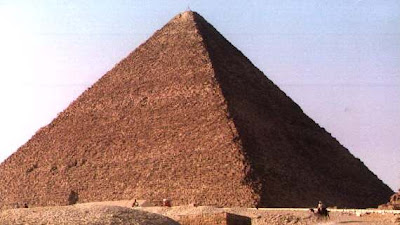
The Megalithic Stone structures, which exist not only in this country but also throughout the Continent of Europe, are a special feature of that period known as the Neolithic Age. As has already been shown, Stonehenge represents a very late type, erected at a time when the bronze culture had begun to overlap that of polished stone (Neolithic).
These stone structures can be roughly divided into three classes.
1. Single upright stones, or menhirs (Celtic = "high stone"), which may be commemorative of some great event or personage.
2. Dolmens (Celtic = "table stone"), in which a stone slab is set table-wise on three or four uprights.
3. Cromlechs (Celtic = "stone circle"). Circles enclosing barrows or dolmens.
Stonehenge is a highly specialised example of this last class. Round these cromlechs popular myth and superstition have crystallised themselves into tales of the devil and his works (as in the case of Stonehenge), ogres, giants, dwarfs, Sabbath breakers, and infidels, turned to stone. In nearly every case there is some story of the supernatural, which cannot be accidental, but which must have its root in past religious observance.
It is a recognised fact that the worship of stones is more widely distributed than any other primitive cult. Its almost universal distribution can be referred to the tendency of the half savage mind to confuse persons and things, and from seeming likeness of the inanimate to the animate, to endue the lifeless object with the virtue and power of the living object. This mental outlook is better understood in practice than in theory. A Melanesian native may come across a large stone, lying upon the top of a number of smaller stones. It suggests to him a sow with her litter of pigs, and he at once makes an offering to it, in the hope that he will secure pigs. In determining the function of Stonehenge, therefore, it will be useful to compare it with similar existing stone circles. The largest of these in this country is Avebury, not many miles distant from Stonehenge. Unluckily, to-day it is so ruined that its former greatness is hardly to be distinguished by the unskilled observer. Formerly comprising some hundreds of unhewn Sarsen stones, barely a score remain in position at the present day. In Avebury, as it was, can be found the early typic model of which Stonehenge is the final product. The use of the circle as a basic form is common to both. In Avebury the Sarsen is a rough unhewn monolith; in Stonehenge it is squared, dressed, and crowned with its lintel. All evidences of a slow evolution from Neolithic to Bronze culture. But whereas the circle alone is used at Avebury, Stonehenge has in addition the horseshoe series of Trilithons and foreign uprights, and in this particular differs from all other Cromlechs in this country. It is the climax of the Megalithic monument, and its use very certainly must have been connected with the religion of the race which set it up. It was, in short, a religious structure, probably used for the observation of the sun, and possibly connected with "nature worship."
The fact that the sun rises over the Hele Stone on the Summer Solstice, and that it can be observed in direct alignment with the centre of the Great Trilithon, can hardly be due to accident. Chance might bring two stones into such a position on the Solstice, but, in this case, the entire monument is so arranged as to place the rising sun in a due line with its axis on this particular day.
It will be well to consider the facts which must have been within the knowledge of the builders of Stonehenge, and to trace as far as may be their reasoning in the building of it.
To begin with, it is almost certain that at the time of building, there existed some primitive form of priesthood, or body of "wise men." This is quite compatible with the culture of the period. The existence of the Neolithic Long Barrows is sufficient evidence that man had, by this time, arrived at that particular culture which grasps the existence of a "spirit."
Death only terminated the existence of the body, and not that of the spirit. It was even able to return and enter another body, say that of a new-born infant, an animal, or tree. And being after the manner of human beings, spirits could understand human language and become accessible to human petitions. Thus a spirit might even prove a powerful friend or enemy. And the dwellings of these spirits would be those great powers which meant so much to a primitive people; the sun, moon, stars, rivers, forests, and clouds; from which arose the two great classes of spirit, the "ancestral" and the "spirit of nature." From this general body was developed a regular hierarchy of good and evil spirits, gradually ascending to the conception of one great creative spirit, or superior deity.
Diamond stud earringsRead more


